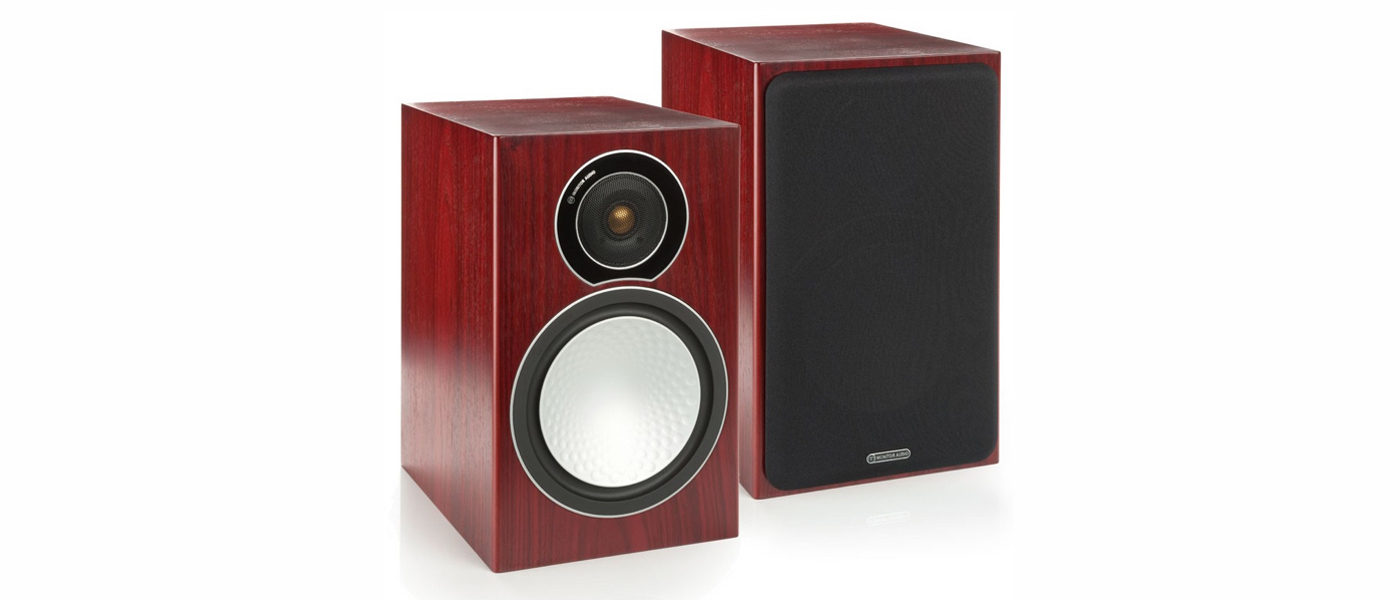Bryston Mini A Bookshelf Speakers Review Highlights
By now, Secrets readers are familiar with Bryston speakers. Travis Allanson reviewed the Model A3 in September, 2014; our Editor reviewed and measured the Middle T in June, 2014; and Jared Rachwalski reviewed the Mini T in July, 2013.
As its name suggests, the Mini A is the baby of Bryston’s Model A lineup. It has a 6.5” woofer, 3” midrange, and 1” metal dome tweeter in a slender rear-ported trapezoidal cabinet. All of the drive units are custom made to Bryston’s specifications. Bryston lists crossover frequencies of 160Hz and 2.3kHz.
The Mini A offers a spacious and open sound, extraordinary image stability over a wide listening area, an attractive cabinet, and Bryston’s industry-leading two-decade (not year, decade) warranty. It has very even horizontal dispersion, as the polar map shows. The Mini A does not offer deep bass, nor can it do spot duty as a PA speaker. A speaker cannot break the laws of physics, only apply them. Bryston did a superb job applying those laws to the Mini A.

Bryston Mini A Bookshelf Speakers Highlights Summary
- Open sound with expansive soundstage
- Superbly wide and even dispersion
- Uncanny image stability, even when seated far off axis
- Limited deep bass, like all speakers of similar size
- Sound their best firing straight ahead, not toed-in towards the listening position
Introduction to the Bryston Mini A Bookshelf Speakers Review
“Bryston,” for the longest time, meant “highly refined and figuratively bulletproof amplifiers.” However, Bryston has long made more than amps. They branched out into preamps early, as well as analog active crossovers. Today Bryston offers digital music players, DACs, surround sound processors, accessories, and a full line of speakers and subwoofers. One can assemble a whole system today from Bryston gear. Bryston has won numerous “Best of” awards from Secrets, including two in 2014.
BRYSTON MINI A BOOKSHELF SPEAKERS REVIEW SPECIFICATIONS
- Design: Bookshelf; Three-way Stand-mount, Rear-ported Enclosure
- Drivers: One 1″ Titanium Dome Tweeter, One 3.5″ Aluminum Cone Midrange, One 6.5” Aluminum Cone Woofer
- Crossover Frequencies: 160 Hz, 2.3 kHz
- Nominal Impedance: 8 Ohms
- Sensitivity: 87dB/2.83V/1m Anechoic
- Origin: Made in Canada
- Warranty: 20 Years
- Dimensions: 15.5″ H x 8.5″ W x 8.25″ D
- Weight: 11 Pounds/Each
- MSRP – $1,200/pair
- Bryston
- SECRETS Tags: Bryston, Speakers, Bookshelf, Polar Map
Bryston loudspeakers are designed in partnership with another Canadian firm, Axiom Audio, and made in Canada. Our Editor recently used Axiom speakers to set up a decor-friendly home theater. While some of the other speakers in Bryston’s Model A lineup look like upscale versions of Axiom models, with custom drivers and more substantially-braced cabinets, the Mini A is unique to Bryston.
Design and Setup of the Bryston Mini A Bookshelf Speakers
The Mini A is a tallish but slender bookshelf speaker, at 15.5” tall by 8.5” wide and 8.25” deep. It looks narrower than the tape measure says. The cabinet shape is very elegant, with a faceted baffle and narrowing sides. The Mini A’s shape and proportions remind me of the Tannoy D700’s I wished I could afford as an undergrad.
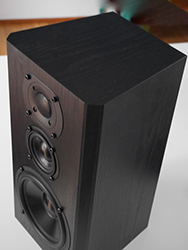
This shape is functional as well as elegant; the facets reduce cabinet diffraction, and the non-parallel sidewalls are claimed to reduce internal standing waves. My review speakers came in the base “black ash” vinyl covering. It is serviceable, but Bryston offers wood veneers at extra cost, including custom finishes to match (or play against) your existing furniture. I think a pair of Mini A’s would look spectacular in an espresso-stained veneer. The Mini A’s sound quality justifies the extra expense.
The Mini A’s are rear-ported, and the generously sized port is both scalloped and fluted to reduce chuffing. Bryston offers a custom foam port plug to ease subwoofer integration or for near-wall placement.
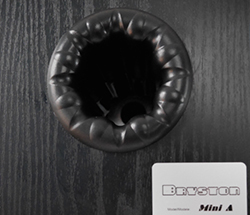
The back panel also holds two pairs of binding posts connected with removable buss bars to allow bi-wring or bi-amping for people into those sorts of things. The posts take bananas, pins, spades, and of course bare wire. Sawtooth/“BFA” style bananas stick out a little from the posts, but they work fine. Interestingly, and rarely, they are spaced to fit old-school dual banana plugs. Dual bananas make it impossible for someone to unplug the speaker and short the two leads together. However, dual bananas are rarely used today because European power plugs have similar prongs and spacing.

The grill has a non-resonant plastic frame, and attaches with six magnets. The Mini A’s baffle has magnets hidden under the surface, for a clean grills-off look. The Bryston logo on the grill is black plastic and somewhat fragile. On my review pair, one broke between the “t” and the “o” in shipping.
The Bryston Mini A’s acoustic design is grounded in science. Bryston drew from studies conducted by the Canadian NRC for the basic architecture shared by all Bryston speakers, and validate their design choices with double-blind preference testing. Blind preference tests at the NRC and elsewhere show listeners to generally prefer speakers with flat and smooth listening-axis response, smooth off-axis response, and extended frequency response.
Experts disagree about the optimal dispersion pattern for a home audio speaker, but research by Dr. Wolfgang Klippel [1] suggests listeners may prefer wider dispersion. Bryston concurs. Their “Family of Curves” design philosophy prioritizes wide and even coverage over the frequency response at any one angle. As Bryston vice-president James Tanner explained it to me, “think of the Bryston speaker as a huge ‘Floodlight’ – rather than a ‘Spotlight.’ What we have learned is, if the reflected sound has the same overall frequency response as the direct sound, reflections actually provide a sense of ‘spaciousness’ to the sound rather than confusing the ear/brain – it maintains a proper tonal balance.”
[1] Wolfgang Klippel, Assessing the Subjectively Perceived Loudspeaker Quality on the Basis of Objective ParametersTo meet this rigorous Family of Curves criteria, Bryston needed to make the Mini A a three-way speaker. Today, the most common home audio speaker configuration is a 2-way with a 6.5- to 7- inch woofer and 1-inch tweeter on a flat baffle. That configuration compromises midrange performance. A 6.5” to 7” woofer’s dispersion narrows in the crossover region, where a 1” tweeter is nearly omnidirectional. A flat baffle also does nothing to control the tweeter’s dispersion. So, absent a very expensive tweeter that can play heroically low, the 6.5-inch 2-way will have flares of off axis energy where the tweeter comes in. Research tells us that, while holes in the off axis response of a speaker are subjectively benign, flares in the off axis response subjectively color the sound. The downsides to a 3-way design over the standard 2-way are cost – extra drive-unit, more crossover parts – and more daunting crossover design.
Another approach to avoid off-axis midrange energy flares is to make a 2-way design with a tweeter waveguide that’s about the same size as the woofer, and set the crossover where the directivity of the woofer waveguide-loaded tweeter match. However, a large waveguide necessarily narrows the speaker’s dispersion. That cuts against Bryston’s Family of Curves philosophy. But a smaller waveguide also provides benefits: it keeps the tweeter’s dispersion wide, but it reduces energy flares in the off-axis response and limits reflections off the baffle edges. Bryston loads their family 1” titanium dome tweeter into a small and shallow round waveguide to take advantage of these benefits.
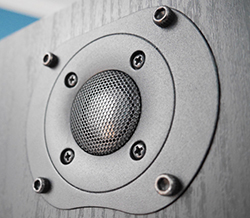
Bryston also puts a clear phase shield over the front of the dome to smooth out its response. Interestingly, the tweeter flange is not fully flush, but just a little proud of the baffle.
I mostly auditioned the Mini A speakers in our living room atop my reference speakers’ 30”-tall subwoofer/stands. Those stands put the Mini A tweeters exactly at my seated ear height. Our living room is about 22′ long, 14′ wide, and 10′ high. The primary listening position is centered width-wise and about 150” from the speakers. I ended up placing the Mini A’s with the tweeters 30” from each sidewall, 41” ahead of the front wall, and 108” apart. After experimenting with toe in, I found the Mini A’s to sound best when aimed straight out, which rotated the primary listening axis to about 20 degrees off axis horizontally. I mostly listened to them without bass augmentation, though I also integrated them with my distributed subwoofer system later in my auditioning. I delayed integrating the Mini A’s with subs as long as possible, because any sensible integration requires measurements. To avoid prejudice, I wanted to form my subjective impressions of the Mini A’s sound before seeing any squiggly lines.
Except where stated below, I auditioned the Mini A’s with lossless files streaming over AirPlay (known to be bit-perfect) from a MacBook to an AppleTV3. An Anthem MRX300 receiver served as preamp. Two channels of an ATI AT2007 provided ample power.
The Bryston Mini A Bookshelf Speakers In Use
The Bryston Mini A speakers had a very open and coherent sound in our living room. The soundstage filled the width of the room on most recordings, and the speakers never telegraphed their locations. Detail was crisp and clear, but there was no initially beguiling but ultimately annoying extreme “resolution of detail” that suggests an errant peak somewhere in the midrange. These qualities were all on vivid display on Yuri Temirkanov’s live 2010 read of Shostakovich’s 7th “Leningrad” Symphony with the St. Petersburg (nee Leningrad) Philharmonic Orchestra.

The Mini A speakers provided a spacious acoustic scene as the Symphony unfolded with manic precision. While the tactile impact of the tympani rolls was present more in spirit than in fact, otherwise the Mini A’s performance did not mark them as “small.” I was especially impressed with how clearly and powerfully the Mini A’s handled the bold trombone figures about 15 minutes into the fourth movement.
The single most unexpected facet of the Bryston Mini A’s sonic performance in our living room was the locked-on stability of the sonic image regardless of where one sat or lay down. We have a daybed against the left sidewall of our living room. I sometimes lie down there while watching TV or (more rarely) listening to music, with my head a foot outside the left speaker. The left speaker is maybe 7′ away from me, and the right speaker is very far away. Yet even in that spot I experienced a stable front soundstage, with well-defined center and breadth nearly spanning the room. One night I was lying there watching the Colbert Report (RIP), when I dozed off during a commercial. When I woke up, I noticed that Dr. Stephen T. Colbert DFA’s voice sounded like it was coming from a point between the two speakers, and not from the left speaker.
I found toe-in, or more precisely zero toe-in, crucial to coax the best sound out of the Mini A’s. I first set them up as I set up my reference speakers: toed in with their tweeters’ axes crossing about a foot in front of our sofa. So set up, the Mini A’s imaged beautifully, but sounded a bit strident in the upper midrange and steely in the treble. Knowing Bryston models share a tweeter and the same design philosophy, I went back and re-read the previous Secrets reviews of Bryston speakers to see how other reviewers positioned them. That brought me to this passage in John E. Johnson Jr’s Bryston Middle T bench test comments: “I would suggest not toeing in these speakers, as the sweet spot is off-axis, in my opinion.”
So I tried firing them straight out, and…I concur. I think firing them straight out also worked well in my room because the Mini A’s fired directly at bookcases on the back wall. Filled bookcases work very well as acoustic diffusers. The difference rotating the Mini A’s made was obvious when I turned on my Oppo BDP-83 disk player to play the 2-channel version of “String of Pearls,” on the DVD-A of Session 55 by Les Brown and his Band of Renown.
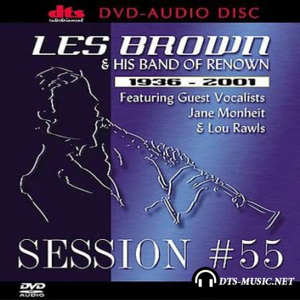
Pointed straight out, the saxophones exploded into the room with bite, but didn’t grate. The right hand of the piano mellowed out. Cymbals lost the hardness they had with the speakers toed-in, and dissipated into the room airily.
I also wanted to see how the Mini A’s rocked. And sometimes, rocking is best done on vinyl. So I brushed off and cued up Derek and the Dominoes’ “Layla and Other Assorted Love Songs.”

My Layla pressing is nothing exotic. In fact, it’s a well-used hand-me-down from my mother that’s a good bit older than I am. It even has Mom’s maiden name written in permanent marker on the label! I spun the black circle on a vintage Bang & Olufsen RX2 turntable with B&O MMC3 cartridge. An iFi iPhono phono preamp fed an analog line level input on the Anthem MRX300. Layla is one of those albums I invariably can’t put down until the needle rises from the fourth side, and so it was with the Mini A. I was especially impressed with how the Mini A speakers floated Eric Clapton’s bent notes into the air when I flipped to Side 4, and the band’s re-imagination of Jimi Hendrix’s “Little Wing” washed over the room.
The Mini A’s did not bust my expectations of how low or loudly a small speaker could play, but they did just fine in terms of dynamics. When the volume reached proverbial 11, the tweeter – same one as Bryston’s bigger speakers, remember – kept on going, but the woofer lost a little bit of cohesion. Also, the Mini A’s are tuned fairly high, so the foundation of music was sometimes only implied. For example, Radiohead’s delightfully caustic broadside against an ex-lover, “Nude,” on In Rainbows
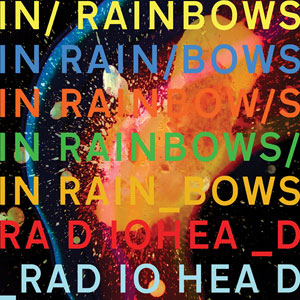
starts with moans and chest-compressing heart-beat like kick-drum, and follows that intro with a dubstep-style bassline. “Nude” at generous levels really taxed the Mini A’s woofers. The Mini-A’s requires bass management and subwoofers to really eke all of the emotional impact out of this song.
A quick word about integrating the Bryston Mini A speakers with subwoofers. The Mini A is tuned pretty high. Bryston had a good reason for that: they wanted reasonable sensitivity in a compact cabinet, and understand the volume displacement limits of a 6.5-inch woofer. So deep bass extension wasn’t in the cards. But a vented speaker quickly transitions from a monopole to a dipole below the tuning frequency, with a steep (4th order) rolloff and large phase shift. This transition from monopole to dipole near the crossover frequency makes integrating the speakers with subwoofers harder. Bryston offers port plugs for this reason. However, I ended up stuffing the ports with (clean!) socks, as that was quicker and easier for me. Stuffing the ports keeps the Mini A speakers operating as monopoles below their cutoff, but raises their low frequency cutoff a bit. Stuffing the ports helped Anthem ARC – probably the best system for automated speaker-subwoofer integration; see Dr. David Rich’s excellent analysis – seamlessly integrate the Mini A’s with my distributed subwoofer setup.
The Mini A’s really opened up with ports stuffed and multiple distributed subwoofers that extend usable bass output below 16Hz. Their soundstage was no wider, mostly because it couldn’t have gotten wider, but it gained additional depth and palpability. This difference in image palpability was dramatically evident on “The Punk and the Godfather” from the Mobile Fidelity Ultradisc II remaster of The Who’s epic “Quadrophenia.”
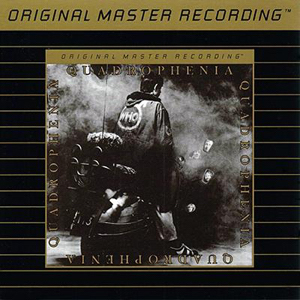
Lastly, I briefly auditioned the Bryston Mini A in two other roles: as a nearfield desktop speaker and as a surround speaker. As long as you don’t toe them in, the Mini A’s work extremely well as nearfield monitors, and if they are close enough to a wall subwoofers aren’t necessary. DAC for my desktop audition was a Meridian Explorer. Amp was a Parasound Zamp v.3 that proved an excellent partner for the Mini A for a desktop system. Despite their three-way design, the Mini A’s sounded fully coherent with only around about three feet between each speaker and my nose! That’s no small thing – my reference desktop speakers use concentric drivers because few non-concentric systems are coherent to me in the nearfield. As surrounds, the Mini A’s disappeared very well when used against the sidewalls and slightly behind the listening position (ports stuffed). Their wide dispersion makes them excellent surround speakers.
The Bryston Mini A Bookshelf Speakers On the Bench
Comprehensive loudspeaker measurements correlate very well to listener perceptions, but incomplete measurements often correlate poorly. By “comprehensive” I mean measurements that paint a holistic picture of the speakers’ frequency response. An on axis frequency response or “listening window” is not sufficient. Fair warning: this section is necessarily a bit dense. If you only read one section of this bench report, skip down to the most important figure: the polar map.
Measurement setup was: Dayton EMM-6 measurement microphone calibrated (on axis and 90 degrees off axis) by Cross Spectrum Labs on a boom mic stand; Focusrite Scarlett 2i2 24-bit/96kHz USB recording interface; and an Apple MacBook running FuzzMeasure v. 3.3.3 on OSX Mavericks. Automatic device (“loopback”) correction was used for all measurements. Driving amp was a Parasound Zamp v.3. Speaker-to-microphone-capsule distance, as reported by FuzzMeasure and corroborated with a Bosch laser measurer, was 1.03m.
The impedance curve, taken with the Dayton Audio Test System running on Windows XP over Parallels on my MacBook, shows the Bryston Mini A to be a very easy speaker to drive, with excellent pair matching.
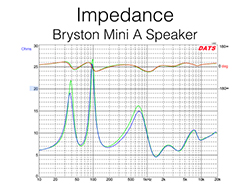
The “saddle” in the plot down low reveals the port tuning is 60Hz, give or take a little. The Bryston Mini A is a true 8 ohm speaker. Its minimum impedance is the 1kHz – 2kHz octave where the woofer and midrange are both substantially active. The phase angle is also benign. Dare I write that the impedance of the Mini A makes it an excellent speaker to drive from an AVR? The current crop of higher end AVRs can swing a lot of voltage, but have relatively small power supplies and limited current delivery compared to good separate amps.
Bryston specifies the Mini A’s crossover frequencies as 160Hz and 2.3kHz. Based on my measurements, that lower point is a misprint. While I could not measure the midrange separately from the tweeter without disassembling the speakers, I used the dual binding posts to measure the woofer separately from the midrange/tweeter array. The graph below shows the woofer response (blue), the tweeter response (red), and the combined response with jumpers attached (purple). This graph is smoothed to 1/3-octave resolution to highlight broad trends.
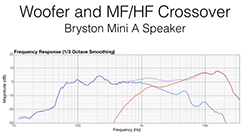
While I did not open the speaker to examine its crossover, the measurements reveal a deceptively sophisticated design. (Unless indicated below, all comments about the crossover design are my inferences drawn from measurements, not information from Bryston.) This speaker would be impossible to execute with off-the-shelf OEM drive-units. At least in a speaker of this size or price.
The kink in the combined midrange-tweeter response slightly above 2kHz, combined with the midrange-tweeter array’s lower bound of roughly 1kHz, suggest the midrange plays over a very narrow passband. The midrange also appears to be 3dB down in level from the woofer and tweeter. In listening, I heard very little from the midrange when I put my ear right up to it. Despite the midrange driver’s seemingly limited role, the polar map below shows the midrange’s output is sufficient to maintain wide, even coverage as the woofer’s dispersion narrows. The broad overlap also likely contributed to the Mini A’s coherent sound as desktop monitors. Also, as James Tanner mentioned to me, more cone area in the midrange means less dynamic compression on midrange transients. The Mini A’s midrange crossover is unconventional, but it certainly works!
The woofer’s lowpass filter is first order (6dB/oct), for broad overlap with the midrange and tweeter. Having such such lobe-free horizontal off-axis response (again, see polar map below) with this broad overlap is quite a feat. I would not be surprised if the woofers the rolloff comes from the custom woofer’s own inductance. That is a smart way to leverage a custom driver and reduce crossover parts cost without affecting performance.
The woofer response curve, below, also shows evidence of a notch filter centered at around 7kHz, presumably to tame the aluminum cone’s breakup.

The Mini A’s clearly evident woofer breakup is the only real cause for concern in this whole battery of measurements. Either the notch filter drifted a little higher in frequency than the woofer’s breakup, or the notch is a narrower than optimal. (I discount the possibility of unit variations in the woofers, because both speakers measured the same.) The woofer’s breakup starts at about 4kHz. Even with the notch filter, the breakup at 5kHz is only down about 3dB relative to 1kHz. Perhaps woofer breakup, combined with the overall rising response trend, caused the hardness or stridency I heard in the treble on axis. However, this kind of barely-suppressed woofer breakup usually causes me ear fatigue, and I listened to the Mini A’s for hours without noting any fatigue. So I don’t know what to make of it.
I do know what to make of the next graph. The listening axis frequency response, also called the “first arrival,” is the most important curve in the family. According to a model patented by Dr. Sean Olive at Harman International, the flatness and smoothness of the first arrival sound account for 45% of a listener’s perception of a speaker’s sound quality in blind preference testing. Another study by Olive asked trained listeners to audition speakers blind and draw the spectral balance they perceived. Above the bass, listeners drew curves resembling the speakers’ listening-axis response, not the sound power or the in-room response. See Chapter 20.2 of Dr. Floyd Toole’s book “Sound Reproduction: Loudspeakers and Rooms” (Focal Press, 2008).
The graph below shows the listening axis frequency response at the 20 degree off axis angle I preferred in our living room.

The treble rises a little on the listening axis, but this rise starts higher in frequency and is less pronounced than at the 0 degree axis, shown below. Even at 1/12-octave smoothing (most published frequency response graphs are lower resolution) the Mini A’s frequency response on my listening axis fits into a tight ± 2.25dB window over the 1kHz – 10kHz decade. This difference in spectral balance between on axis and 20 degrees off the horizontal axis is likely why I preferred the Mini A’s firing straight ahead rather than toed in, just as our Editor preferred the Bryston’s Middle T speakers firing off axis.
While the first arrival is extremely important, it is not sufficient to characterize a speaker’s sound. According to Dr. Olive’s model, off-axis response smoothness accounts for 30% of a listener’s perception of a speaker’s sound quality. Studies also suggest early reflections actually enhance dialog intelligibility, so long as they are tonally similar to the first arrival. The next figure shows the frequency response of the Bryston Mini-A, 0-90 degrees horizontally, in 15deg increments, with 3dB offsets to make all those measurements comprehensible on one graph.
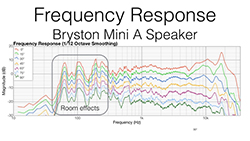
Note the remarkable similarity of the curves. Bryston’s emphasis on a “Family of Curves” comes through here. James Tanner told me the Mini A had excellent dispersion out to 75 degrees. He was being modest. Even the 90 degrees off axis curve – literally tangential to the baffle! – looks very good.
I measured the Mini A indoors, so the low end shows room effects rather speaker response. The only thing the low end tells us about the Bryston Mini A is where it transitions to a dipole and can no longer drive the room. The general dip from 150 Hz to 1 kHz is real, though I’m less sure of the apparent resonance near A440. The on axis response also rises about 3dB over the 5kHz – 10kHz octave.
The next figure shows a polar map of the Bryston Mini A’s frequency response in the horizontal plane. A polar map is by far the best way to capture a speaker’s objective performance at a glance. The polar contains far more information than the offset collection of frequency response graphs above, yet is much easier to digest. However, polars are rarely done simply because they are so tedious to make. For the polar map below, I set the Mini A on a turntable, raised it so its tweeter was about 50” off the ground, and measured its response every 5 degrees of rotation from 0 degrees from 90 degrees. However, FuzzMeasure does not – yet, I hope! – generate polar maps. So I exported my data to Bill Waslo’s Omnimic software, and manually shifted each curve up by 90dB so the Omnimic software would see the data. The Mini A is symmetric about the rotating axis, so left and right sides are mirrored below.
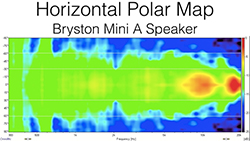
The polar map above is the first one published by Secrets. For comparison purposes, the most comprehensive database of consumer and professional loudspeaker polar maps known to me is at Prof. Edgar Choueiri’s 3D Audio & Applied Acoustics (“3D3A”) Lab at Princeton University. Dr. Earl Geddes also maintains a database of polar maps for home audio speakers at his Gedlee LLC website; Dr. Geddes’ polar maps require Internet Explorer to view. Some European pro audio companies, such as Neumann (nee Klein+Hummel) and Genelec, publish polar maps in the datasheets for some of their studio monitors.
One word encapsulates the Bryston Mini A’s polar response: remarkable. Few speakers at any price offer such wide and even coverage. The Mini’s A’s general pattern (green) is 120 degrees of horizontal coverage through the midrange and treble, until dispersion narrows due to the size of the tweeter’s dome. The regions of elevated treble (yellow) and treble hot-spots (red) are well contained close to on axis. This polar map suggests aiming the Mini A’s straight ahead but spacing them wider than I could (or keeping them at the same positions but moving the listening position forward) may have further improved the Mini A’s sound. I could not, alas, do either one in our living room.
Outside of the overall coverage pattern, the most important flaws exposed in polar maps are off-axis flares of energy. Holes in the response outside of the listening axis are subjectively benign, but flares subjectively cause coloration. Primary causes of flares are directivity mismatches and drive-unit resonances such as break up. The Mini A’s only off axis flare of note, slightly above 5kHz, corresponds to the woofer’s break-up shown above. The tweeter’s shallow waveguide narrows the tweeter’s dispersion just enough to prevent a flare of energy around the 2.2kHz crossover point; without it the green area would likely extend dear 180 degrees in that crucial region. There is a sonically benign hole in midrange-tweeter crossover region, which may represent a lobe caused by the midrange-tweeter crossover and/or the woofer’s slow rolloff.
While the horizontal off axis performance of a loudspeaker is considerably more important than the vertical off axis performance, especially at long listening distances (my primary listening position is 150” away from the speakers) the vertical performance determines the speakers’ optimal elevation relative to the listener’s ears. The next figure shows the frequency response of the Bryston off axis from thirty degrees below to thirty degrees above, in 5-degree intervals. The vertical off-axis measurements confirm my listening experience that the Mini A performs best with the tweeter at ear height. If you must use speaker stands that put the tweeter under ear height, angle the speakers up so that the “money seat” is vertically on axis.

The Mini A’s has neither a symmetrical driver array nor a tweeter concentric with the midrange, so geometry dictates the vertical response will have some asymmetry due to pathlength differences between midrange and tweeter. However, the measured asymmetry is minimal over this 30-degree arc.
One feature that distinguishes a comprehensively engineered speaker from the pack is how much its grill affects the frequency response. Grills can massively alter the sound of a speaker. The graphs paired below show the difference in response caused by the Mini A’s grill on axis and at 30 degrees off axis.

Here, the grills have a very minor effect on the Mini A’s measured performance. I suspect those differences further diminish as you move away from the speaker. I did most of my listening with the grills on, because visible drive units diminish my engagement with the music.
Lastly, to better compare these measurements with those found in other Secrets reviews, or elsewhere, I processed my data into two NRC-style “listening window” graphs. The NRC listening window is a spatial average of 5 points spanning 30 degrees horizontally and vertically. The first one is a higher resolution plot.
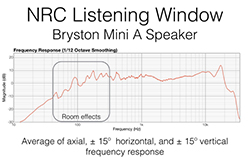
The last one is the typical “marketing graph” with coarse 1/3-octave smoothing.

For better or worse, convention dictates centering the listening window directly on axis. The treble rise would appear substantially flatter if the origin point were 30 degrees off-axis horizontally, to reflect the Mini A’s optimal positioning. But that would throw comparability out the window.
Conclusions about the Bryston Mini A Bookshelf Speakers
Bryston’s Mini A speakers sound like they measure (or vice-versa): excellent. They render a wide soundstage and have a very open sound. The polar map tells the tale why. But I was also genuinely astounded by how stable and centered their imaging remained even when well, well away from a reasonable listening position. Normally it takes three good speakers up front to get that kind of image stability.
Despite their compact size, the Mini A’s did a credible job even with large-scale orchestral music in my listening room. Still, as one should expect given their size, the Mini A’s are not true full-range speakers. Plug the ports and integrate subwoofers well to enjoy the Mini A’s virtues with significantly enhanced image depth and palpability. But the Mini A’s are very enjoyable even without supplemental deep bass.
The Mini A’s also work very well as desktop speakers. Their footprint is relatively small, their height puts the tweeters’ height close to a listener’s ears height, and a desk surface will reinforce the bass. The Mini A’s would also be excellent surrounds in a multichannel system with larger Bryston speakers up front, due to their shared design philosophy and the reduced demands at the surround positions. I recommend carefully auditioning the Bryston Mini A speakers if you are in the market, and I recommend bugging a Bryston dealer to hear what a creatively engineered wide dispersion speaker sounds like even if you are not.
The author wishes to acknowledge the assistance of Dr. David Rich in the preparation of this review.


